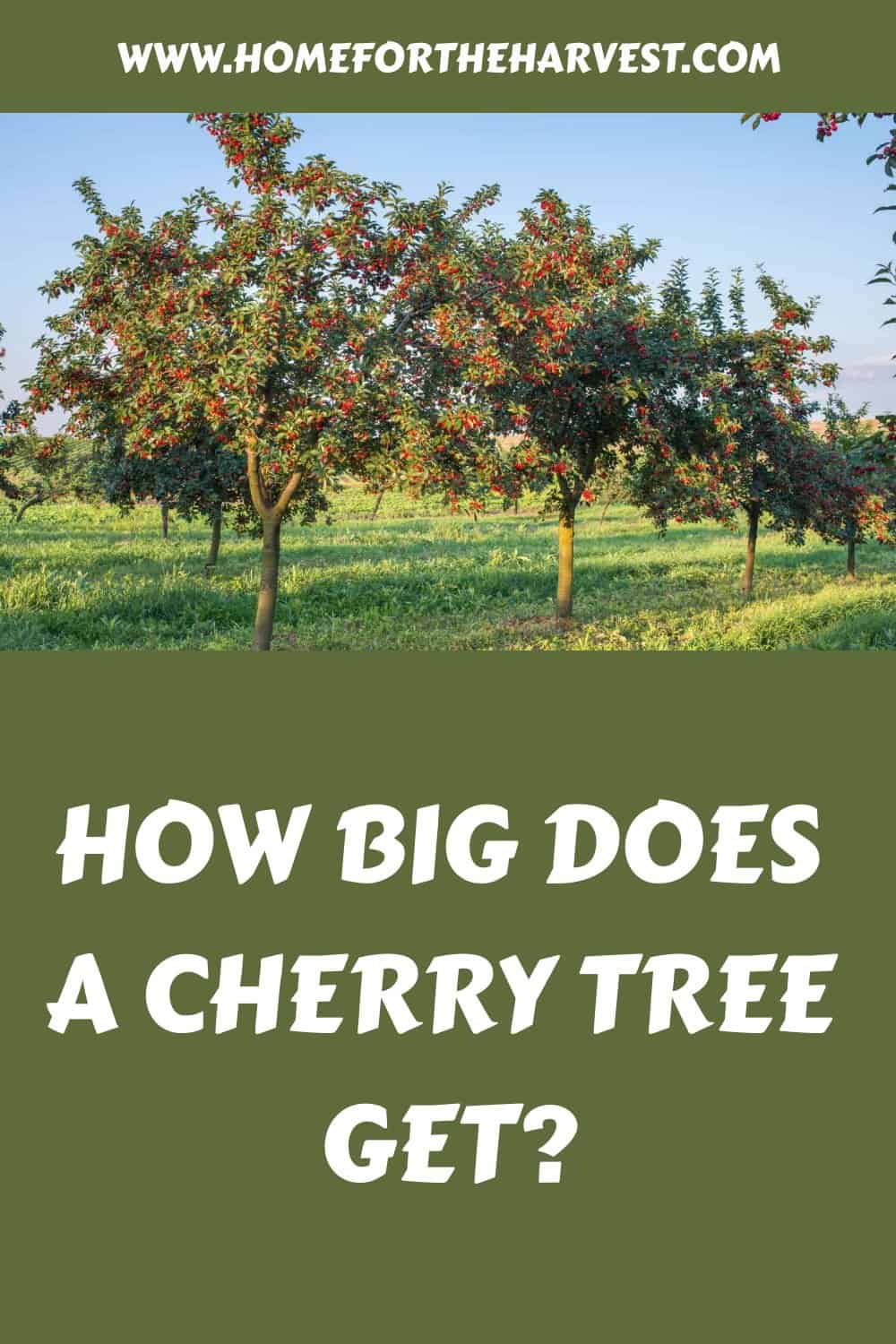One interesting fact about cherry trees is that they don’t always get as big as people think. If you want a huge cherry tree, be ready to give it everything it needs to grow properly! Question is: how big does a cherry tree get?
Most sweet cherry trees grow to be about 15-20 feet tall and about 15 feet wide. That said, certain varieties can reach over 30 feet (especially if unpruned). Sour cherry trees tend to grow considerably smaller than sweet cherries. Sour varieties like Montmorency grow to 12-18 feet tall and 10-12 feet wide, while dwarf shrub-form cherries like Juliet Cherry and Romeo Cherry often reach only 6-8 feet tall and about 5-6 feet wide.
Read on to learn all about how tall and wide cherry trees grow!
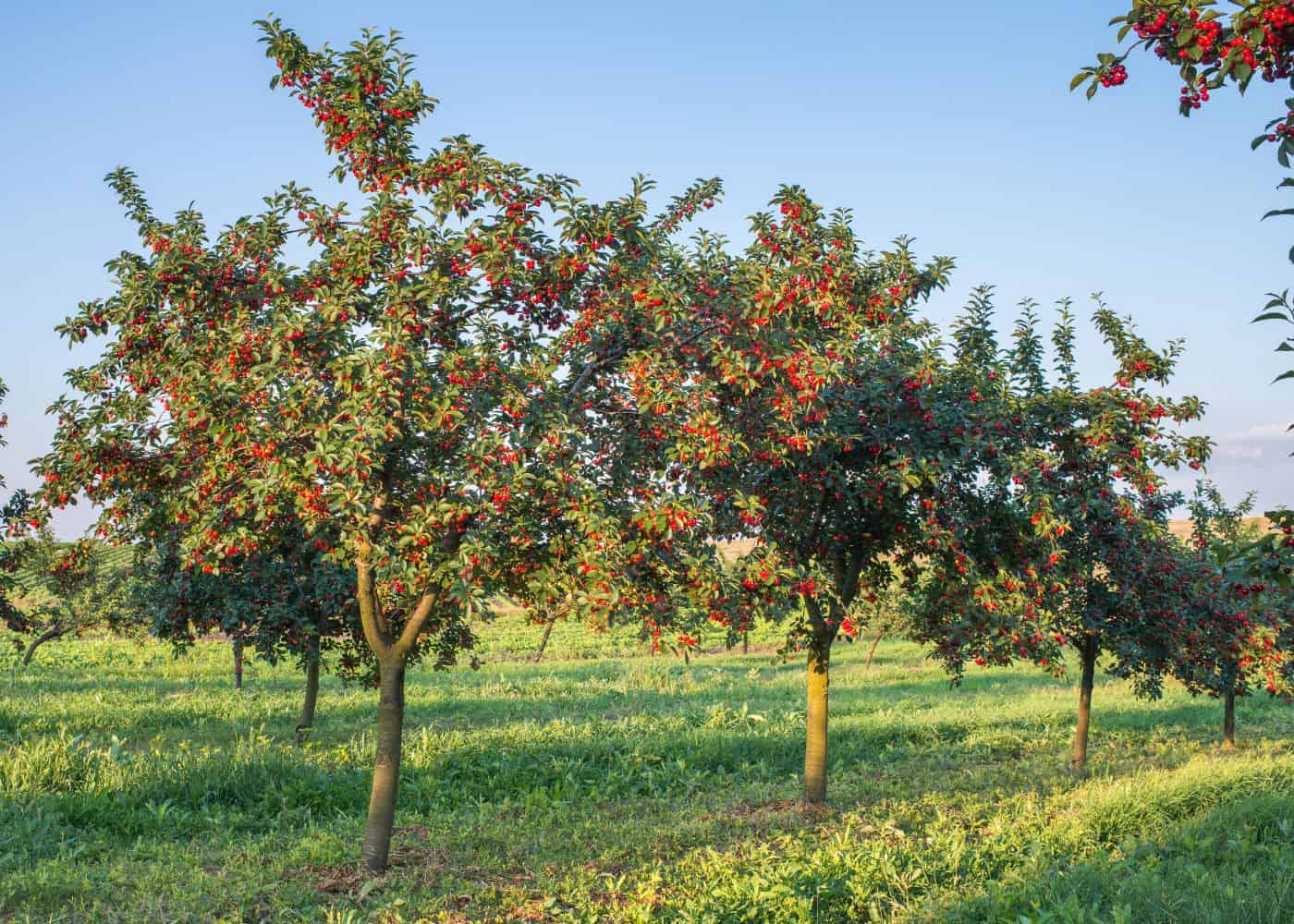
How big do cherry trees get?
Cherry trees range from large shrubs at 6-8 feet tall, to average-size trees at 15-20 feet tall, up to large varieties at 30+ feet tall. Wild cherry trees can reach 50+ feet! Most cherry trees are not quite as wide as they are tall, but you’ll still need almost the same distance in a horizontal spread as you’ll need in height.
Here are the common mature sizes of popular types of cherry trees:
- Bing Cherry Tree (Prunus avium ‘Bing’): 16-20 feet tall, 12-15 feet wide
- Rainer Cherry Tree (Prunus avium ‘Rainier’): 15-25 feet tall, 12-18 feet wide
- Lapins Cherry Tree (Prunus avium ‘Lapins’):15-20 feet tall, 12-15 feet wide
- Black Tartarian Cherry Tree (Prunus avium ‘Black Tartarian’): 30-35 feet tall, 20-30 feet wide
- Montmorency Cherry Tree (Prunus cerasus ‘Montmorency’): 12-18 feet tall, 10-12 feet wide
- Juliet Cherry Tree (Prunus fruticosa x Prunus cerasus ‘Juliet’): 6-8 feet tall, 5-6 feet wide
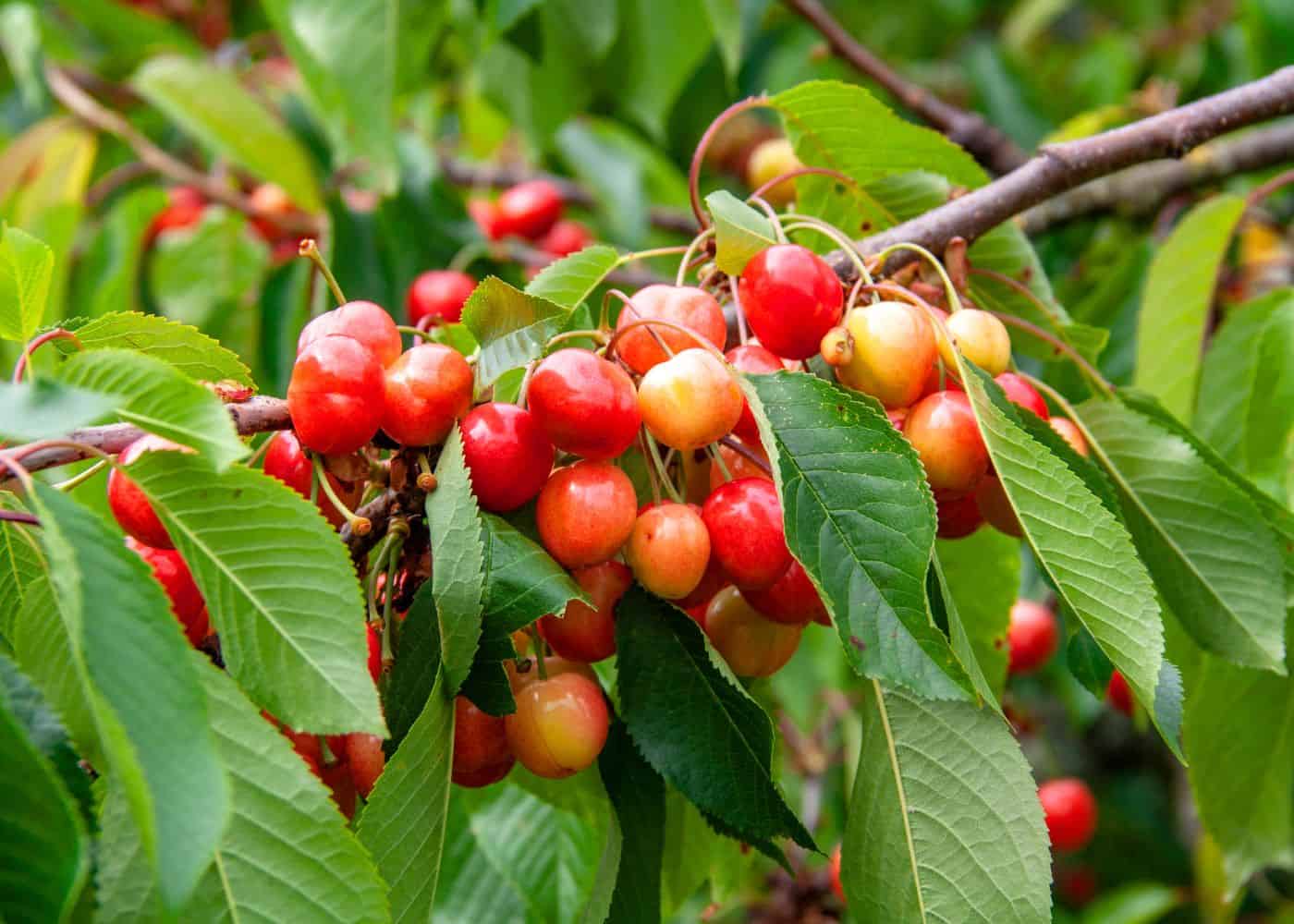
In general, sweet cherry trees are taller and wider than sour cherry trees. Certain sweet cherry varieties like Black Tartarian can get very large (30+ feet tall). Sour cherries that have been crossed with ground cherries (Prunus fruticosa) are more like large shrubs than trees and are often under 10 feet tall.
“Undisturbed in its native environment, the young sweet cherry (Prunus avium) will grow as a central leader tree. Growth is rapid and apical dominance is strong. Thus, the tree tends to branch only just below the terminal bud of annual growth, can grow to 60 feet, and is non precocious so it can establish a competitive “footprint” in the forest before shifting resources to fruiting.”
Cherry Training Systems, Oregon State University
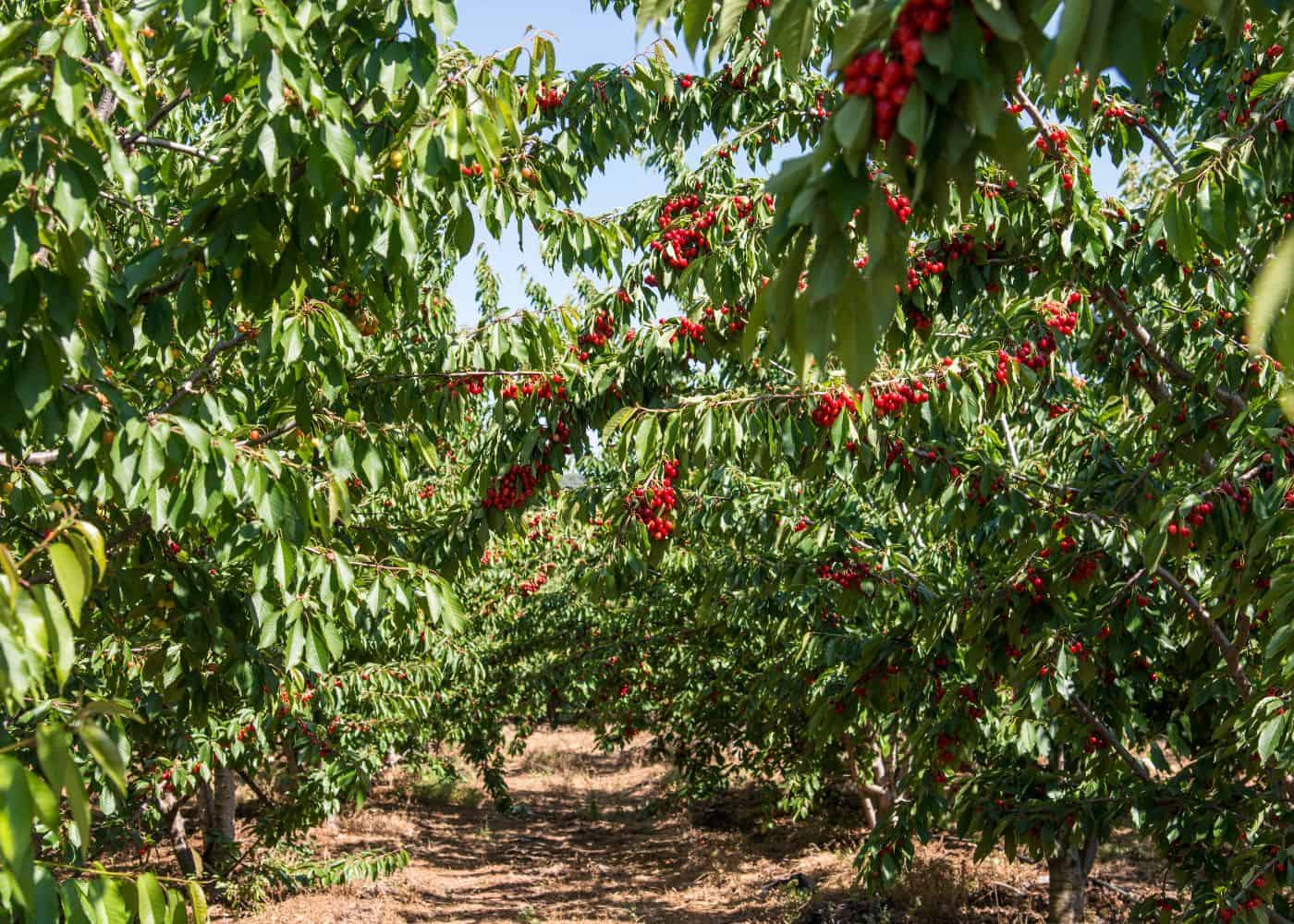
How much space do you need for a cherry tree?
For most sweet cherry varieties like Bing Cherry and Rainer Cherry, you’ll need a space large enough to accommodate a tree that’s about 15 feet wide at maturity. The tree will likely be over 15 feet tall too, so keep that in mind. It’s also good to have air flow around all sides of the cherry tree as these trees can be prone to fungal disease in stale air.
With most plants, many factors impact cherry tree size, including the type of soil they’re planted in, how much water they receive each day, how much full sun they get each day, etc. However, if these conditions are right, your cherry tree will typically grow around 20 feet tall and 8 feet wide (depending on variety).
So what does this mean for you? It means that if you want a beautiful cherry tree in your backyard that provides shade during those hot summer days, or some color during those cold winter nights, then planting a cherry tree is perfect for you!
And don’t worry about how much space it takes up because cherry trees are great at being compact. So even if you have limited space available, a cherry tree can still be perfect for your garden, assuming you prune it regularly so the branches receive decent air circulation.
Special dwarfing rootstocks
Fruit trees that are of a specific “named variety”, or cultivar, are all created by grafting a branch off the mother tree onto a hardy rootstock. Dwarf rootstocks that reduce a tree’s overall height are becoming much more common as cherry orchards introduce new training methods.
Dwarfing rootstocks can lead to trees half as high as they would otherwise be (although they usually need staking or trellising as the roots are weak). Here are some different dwarfing rootstocks for cherry trees under 10 feet tall:
- Gisela®3 dwarf cherry rootstock
- Gisela®5 semi-dwarfing cherry rootstock
- Krymsk®6 semi-dwarfting cherry rootstock
“In recent years, there has been a substantial increase of available rootstocks that provide growers with a complete range of vigor from full vigor, full size to true dwarfing rootstocks that reduce vigor by 50% or more. These dwarfing rootstocks facilitate the harvest of premium quality fruit from high-density, pedestrian orchards.”
Sweet Cherry Rootstocks for the Pacific Northwest, Oregon State University
Sour cherry tree size
Pie cherries, also known as sour cherries (Prunus cerasus), are extremely durable cold-hardy cherry trees (many are Zones 3 to 7). They develop on little cherry trees that are 10 to 15 feet tall, or even on large shrubs that reach only 6-8 feet tall.
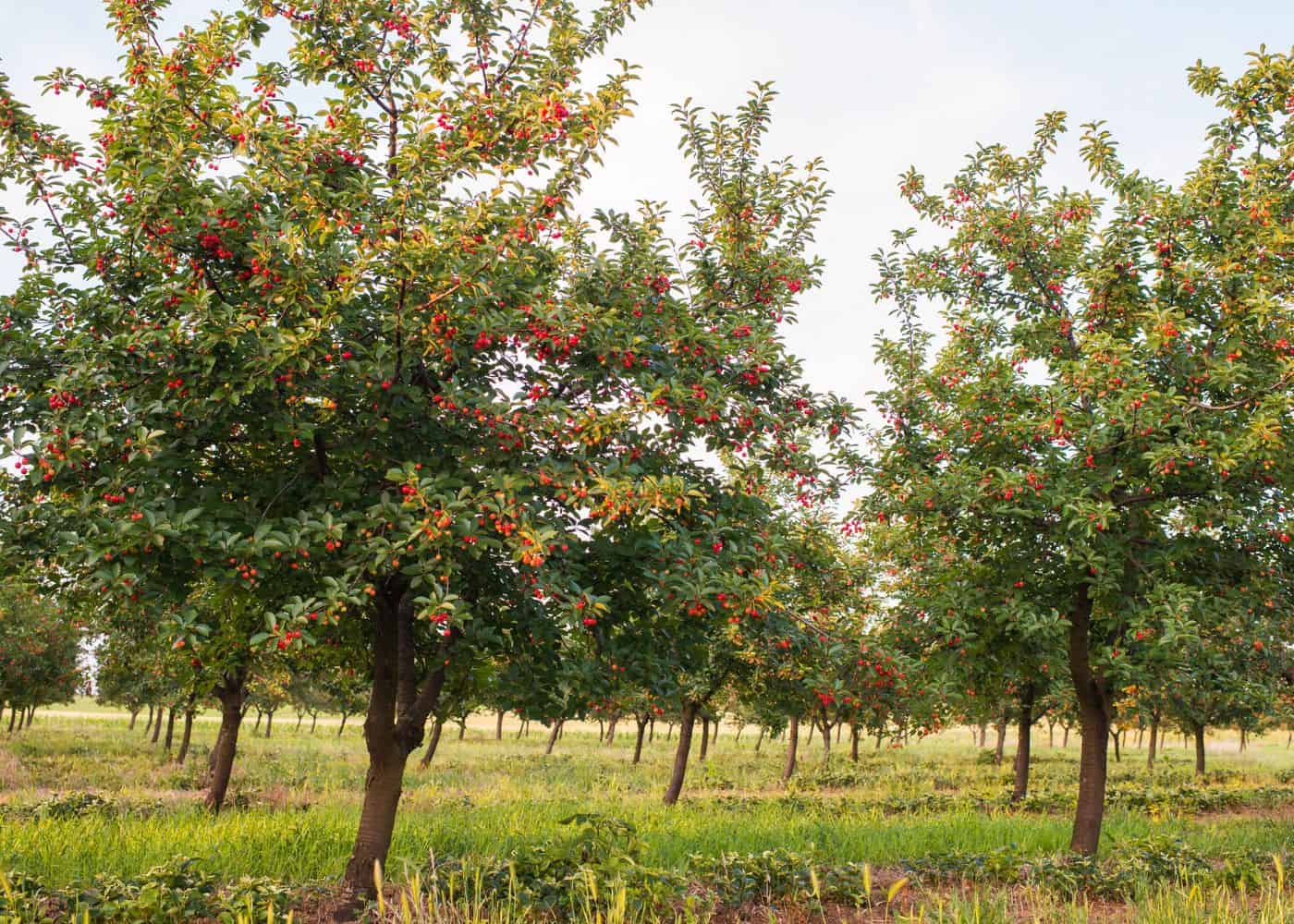
Sweet cherry tree size
Market-available sweet cherries (Prunus avium) are low-acid, sweet fruits. They taste best when eaten right away. These cherry trees are less hardy (cold-hardy down to Zone 5) and require a specific location in Northern temperatures to flourish. This is because while the trees aren’t hardy to climates that go below about 20 °F (-29 °C), they do require a “chilling period” of hundreds of hours of cold temperatures to set fruit.
You can typically grow sweet cherry cultivars if you can raise peaches in your are. If they aren’t pruned, sweet cherry trees can grow 25 to 30 feet tall. There are dwarf trees available, but find out how robust and hardy the rootstock is, as some may need staking if they are on weak dwarfing rootstocks.
Nanking cherry tree size
According to The Maine Organic Farmers and Gardeners Association, the 6 to 10-foot-long spreading bushes known as Nanking cherry (Prunus tomentosa) produce tasty scarlet fruit best used in pies and preserves. The cherry blossoms that are only aesthetic do not bear fruit.
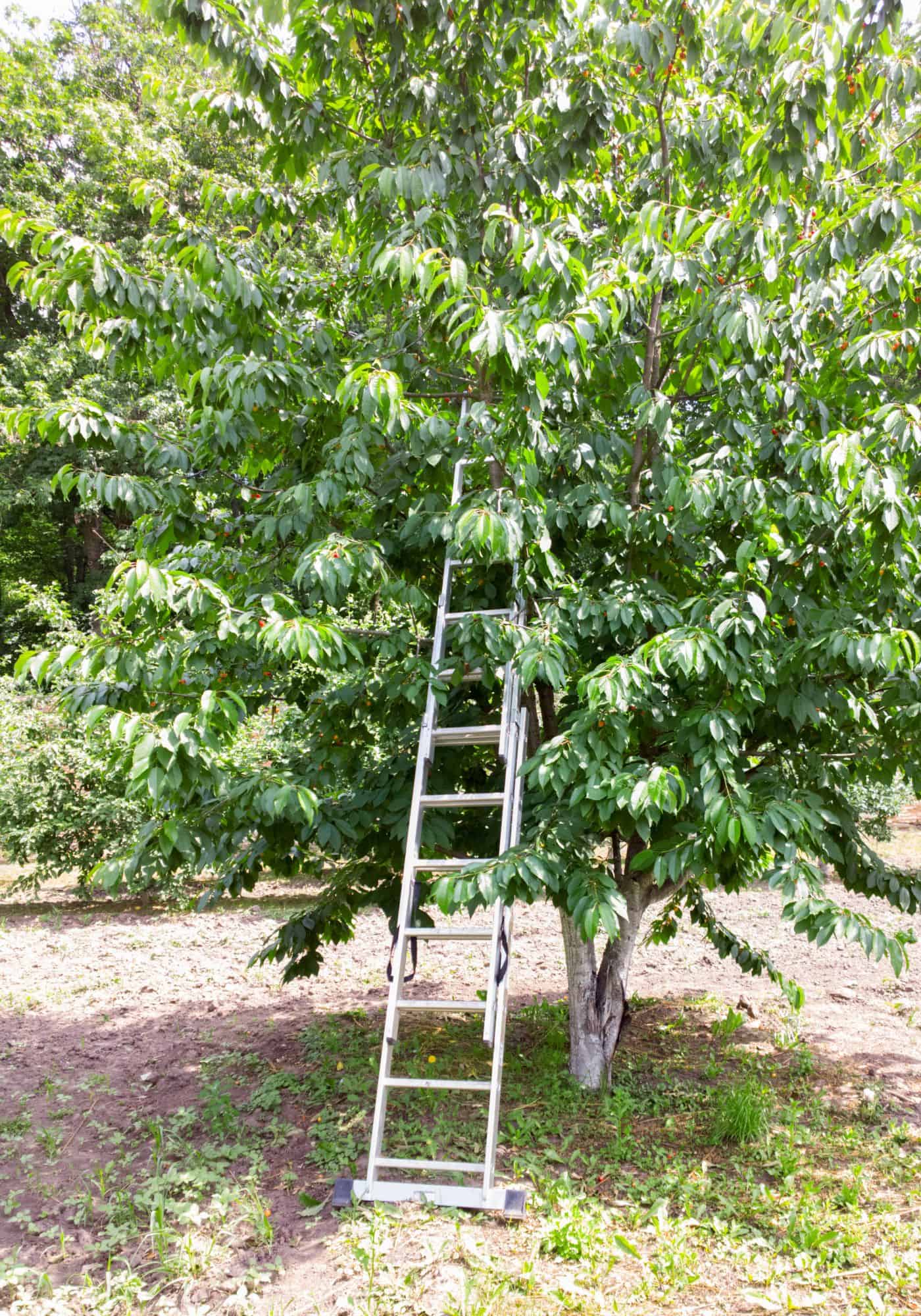
Harvesting from your cherry trees
The Ohio State University says cherry trees will yield fruit on your tree in three to five years. When this occurs, you can pick the cherries when they are fully ripe. Depending on the type and year, this can happen between early June and late July.
Sour cherry trees can usually be harvested on foot, while full-size sweet cherries require a ladder. That said, dwarfing rootstocks and cherry tree training systems can be used to keep trees under 10 feet tall so they can be harvested on foot.
The normal yield of a semi-dwarf cherry tree is 12–18 gallons, compared to 3-5 gallons for a sour dwarf cherry tree. You can usually keep your cherries in the refrigerator for 7–10 days (longer if you leave the stem). Depending on your needs, you can also freeze or can your cherries.
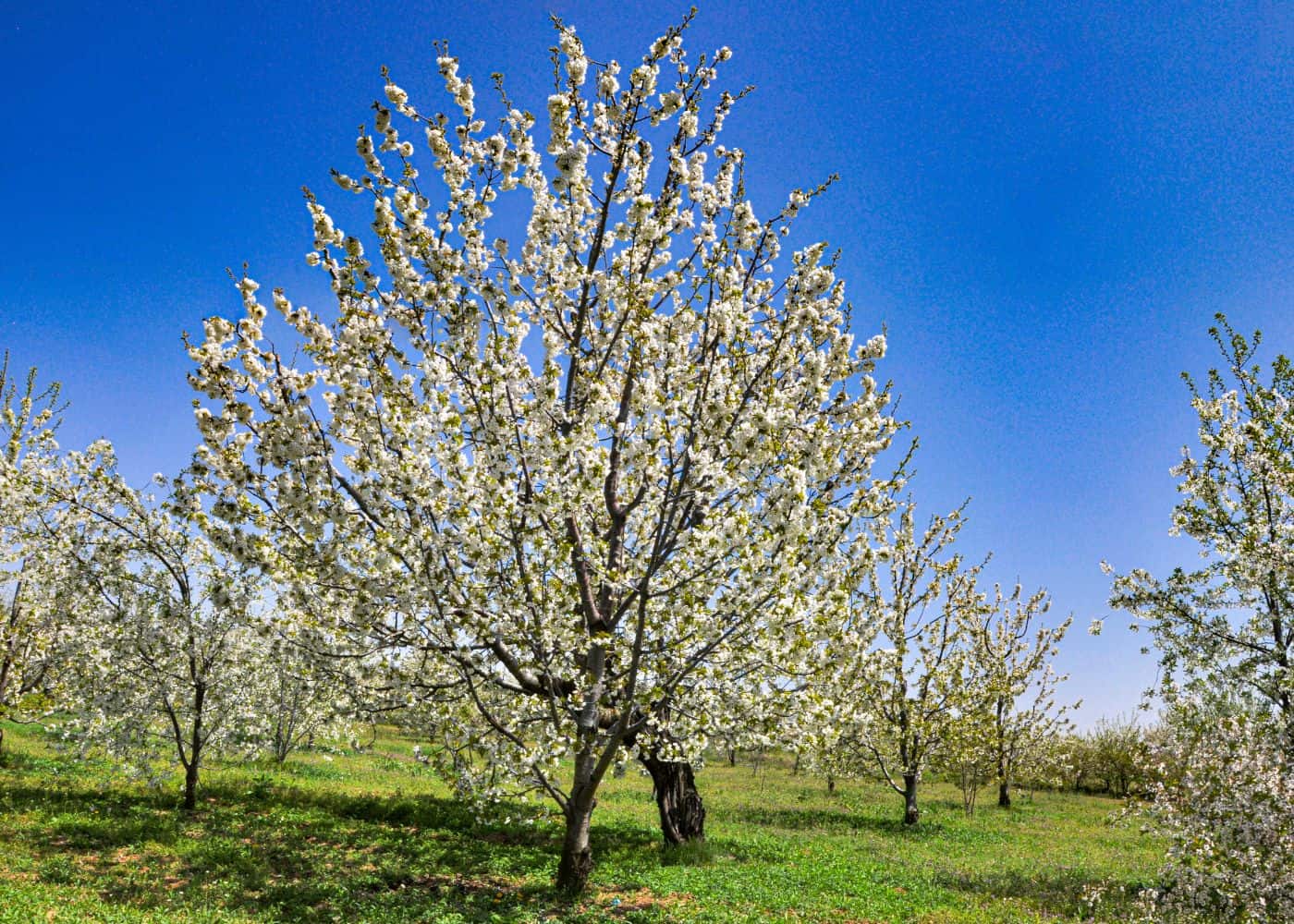
Lifespan of cherry trees
Lifespan depends upon the cherry species, planting conditions, and the local climate. Cherry trees can live to 40+ years old in excellent conditions. This usually means in a location with lots of air circulation, well-drained soil, full sun, access to water, and not too much competition from other trees.
Lifespan can be much shorter in less-than-ideal locations. According to Iowa State University, sweet cherry trees rarely live longer than ten years in Iowa (although there are certainly quite a few exceptions). Cherry trees that produce sour or tart cherries can live for 20 to 25 years in Iowa (so longer than sweet cherries, but still not terribly long). Make sure to pick a well-drained area while choosing a planting site to extend the lifespan.
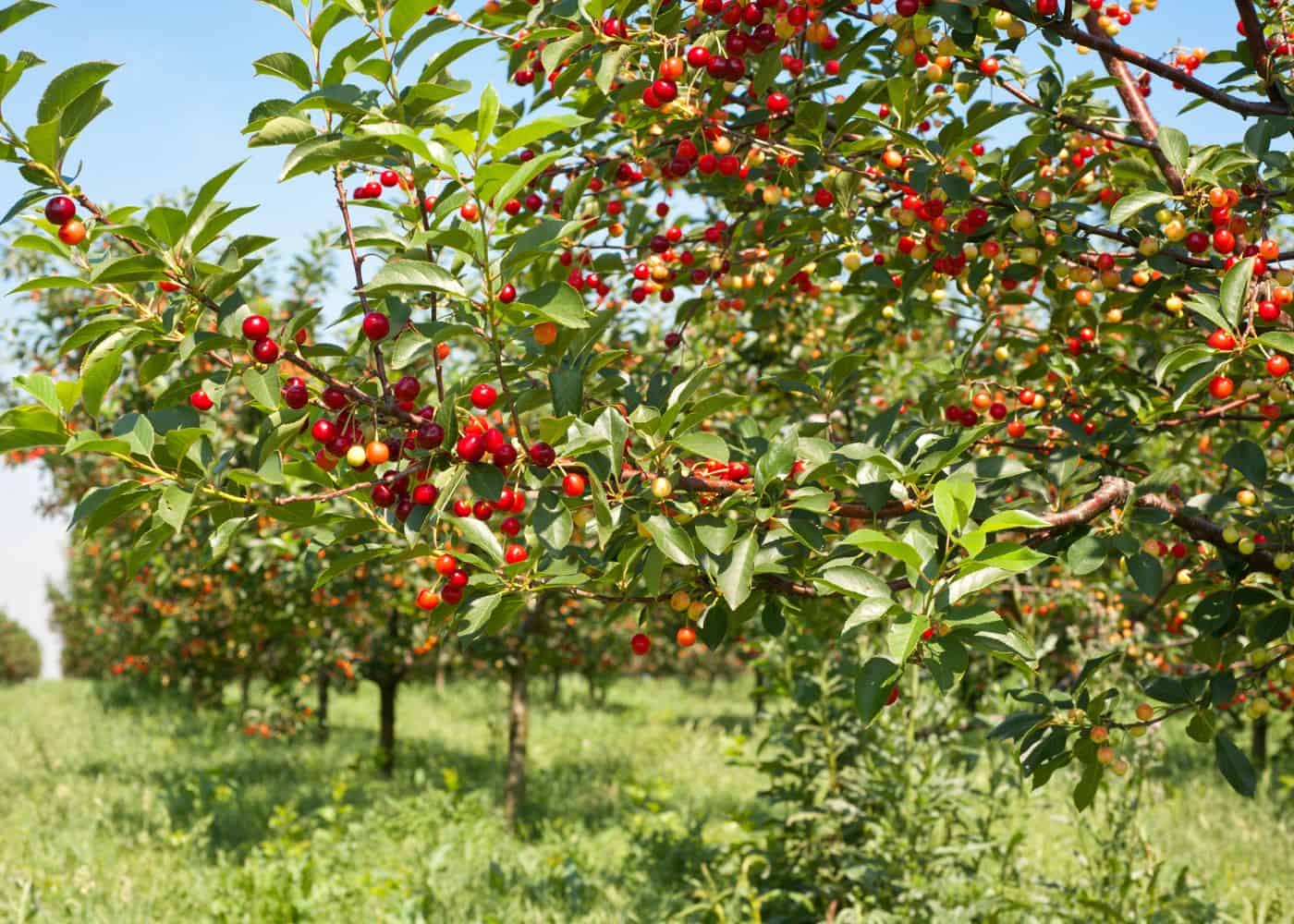
References
- Iowa State University, Growing Cherries in the Home Garden
- Oregon State University, Sweet Cherry Rootstocks for the Pacific Northwest
- Maine Organic Farmers and Gardeners
- Ohio State University, Edible Landscapes
- Royal Botanic Gardens Kew, Plants of the World Online


